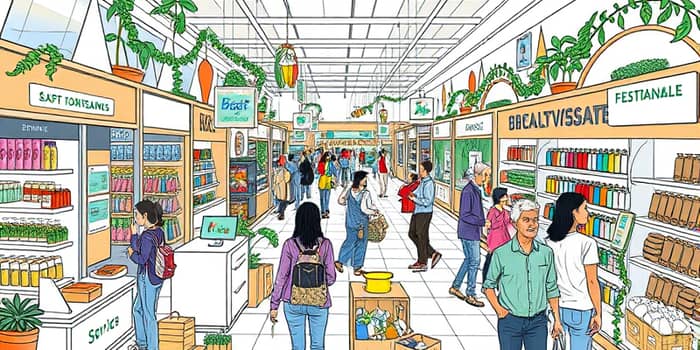
The latest retail sales data reveals the evolving nature of consumer choices and market dynamics. As retailers plan for 2025, they must adapt to both opportunities and risks shaping the industry’s future.
By examining growth rates, spending patterns, and technology adoption, we uncover how shoppers are prioritizing value, convenience, and ethics in their daily lives.
According to the National Retail Federation, total retail sales are projected to reach between $5.42 trillion and $5.48 trillion in 2025, representing low unemployment and real wage gains that continue to support spending. This forecasted 2.7%–3.7% year-over-year growth closely follows the 3.6% rise seen in 2024, when sales hit $5.29 trillion.
Despite healthy fundamentals, consumers face persistent uncertainty due to policy and inflation concerns. While overall inflation has receded from its peak, prices for essentials—especially food—remain above pre-pandemic levels, squeezing household budgets.
Risks such as proposed higher tariffs on imports could exacerbate supply chain disruptions and push costs higher, potentially dampening consumer confidence and altering buying behavior.
Digital retail’s momentum shows no sign of slowing. Global e-commerce sales are expected to grow from $6.09 trillion in 2024 to $6.56 trillion in 2025, an 8.4% increase. In the U.S., online and non-store sales will likely rise 7%–9%, reaching $1.57 trillion to $1.60 trillion.
Consumers now demand frictionless journeys across channels. Retailers are investing heavily in mobile apps, in-store pickup, and same-day delivery to meet expectations and reduce cart abandonment.
Platforms are also leveraging advanced data analytics to predict demand spikes during pay cycles and promotional windows, ensuring the right inventory is available when shoppers are most active.
As price pressures persist, heightened price sensitivity is driving consumers to hunt for deals and bulk-buy staples. Discount retailers and warehouse clubs report robust traffic, while lower-income groups increasingly rely on food pantries for support.
Private label products continue to gain traction, offering comparable quality at lower prices. Store-brand sales have risen steadily, reflecting value-seeking and private label growth that reshapes retailer assortments.
Retailers that streamline supply chains to reduce costs can pass savings to consumers, further boosting their competitive edge in price-sensitive markets.
Shoppers are placing new emphasis on wellness and ease. Demand for ready-to-eat, quick, and convenient food has surged, prompting retailers to expand deli counters, meal kits, and on-demand delivery services.
Technology plays a central role: AI-powered personalization and digital analytics enable brands to tailor recommendations, promotions, and content based on individual preferences and browsing behavior.
Studies show that 80% of buyers expect customized experiences, while 75% engage more deeply with brands offering educational and relevant content. By using intent data and engagement metrics, retailers can anticipate needs and guide customers through the purchase funnel.
Environmental and ethical considerations are now integral to purchasing decisions. Consumers prioritize brands that demonstrate transparency, reduce waste, and source products responsibly.
Retailers investing in green packaging, carbon footprint tracking, and circular economy models are winning loyalty among eco-conscious shoppers, who view such commitments as essential rather than optional.
The retail industry stands at a crossroads where adaptability and insight are paramount. Retailers must balance investments in technology, assortment, and sustainability to meet consumer expectations.
Embracing omnichannel strategies, strengthening private label offerings, and deepening customer relationships through personalized experiences will be critical. By understanding and responding to evolving preferences, retailers can not only weather uncertainty but also spark growth and loyalty in a dynamic marketplace.
Ultimately, those who remain agile, data-driven, and consumer-focused will thrive, transforming shifting preferences into lasting connections and sustainable success.
References













